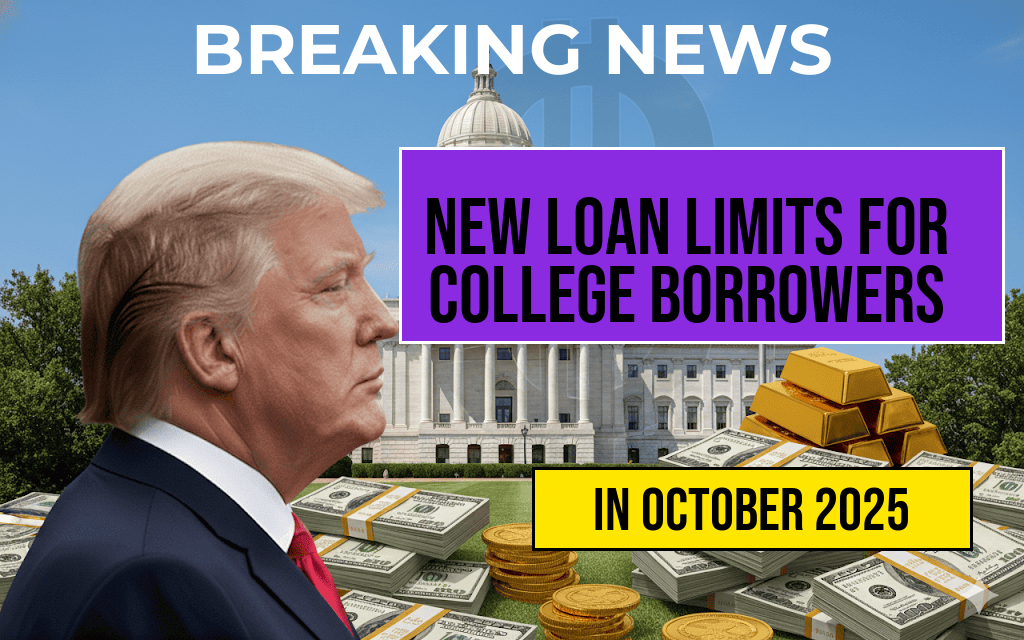Effective immediately, federal regulations have introduced new caps on student loan borrowing for physicians and legal professionals. Under the revised policies, doctors and lawyers will be limited to borrowing a maximum of $50,000 annually, with a total borrowing cap of $200,000 by 2026. These measures aim to address concerns over rising student debt burdens among highly trained professionals while promoting financial stability and responsible lending practices. The changes, which take effect across all federal loan programs, represent a significant shift from previous policies that allowed for higher borrowing limits, especially for those pursuing specialized careers. Experts suggest that these limits could influence the trajectory of educational financing for future doctors and attorneys, potentially impacting career choices and the affordability of professional training.
Background and Rationale Behind New Loan Caps
The federal government has historically supported higher education through accessible loan programs, but mounting concerns about escalating student debt have prompted recent reforms. According to the Department of Education, the primary motivation is to prevent excessive borrowing that can lead to financial distress post-graduation. The revised caps are designed to strike a balance between providing adequate funding for professional education and discouraging unsustainable debt levels.
“While professional degrees often command high salaries, the long-term debt burden can be daunting,” notes Dr. Susan Harris, an economist specializing in higher education policy. “These new limits aim to promote responsible borrowing habits early in a professional’s career, reducing the risk of default and financial instability.”
The new policy also aligns with broader efforts to reform federal student aid, addressing concerns about predatory lending practices and the rising cost of professional education. The caps are part of a comprehensive plan to enhance the sustainability of federal lending programs while maintaining access to necessary funding for medical and legal training.
Implications for Medical and Legal Education
The impact of these borrowing limits could be multifaceted, influencing students’ educational pathways and career decisions. For many aspiring physicians and attorneys, federal loans constitute a significant portion of their funding. Limiting borrowing capacity might lead to increased reliance on private loans, scholarships, or alternative funding sources.
Medical schools, in particular, have expressed concern that the caps could deter some students from pursuing specialized training, especially those who plan to attend competitive institutions with higher tuition costs. Conversely, some advocates argue that these restrictions could encourage students to seek more affordable educational options or reduce the tendency to take on excessive debt for less essential pursuits.
Legal education, often associated with substantial costs and prolonged study periods, might also see shifts in enrollment patterns. Law schools could experience a decline in applicants who perceive federal loan limits as a barrier to financing their education fully, potentially influencing the diversity and composition of future legal professionals.
Details of the New Federal Loan Limits
| Year | Annual Borrowing Limit | Maximum Total Borrowing |
|---|---|---|
| 2024 | $50,000 | N/A |
| 2025 | $50,000 | N/A |
| 2026 | $50,000 | $200,000 |
The caps are implemented through amendments to existing federal student loan programs, including the Federal Direct Loan Program. Borrowers will need to carefully plan their educational financing to avoid exceeding the limits, which are intended to cover tuition, fees, and essential living expenses during training periods.
For comparison, previous borrowing limits varied considerably depending on the program and individual circumstances, often allowing for higher cumulative debt loads. The new standardized caps aim to promote equitable access and sustainable borrowing practices across the board.
Responses from Stakeholders
Medical Community
Many medical professionals and advocacy groups have voiced mixed reactions to the new limits. The American Medical Association (AMA) issued a statement emphasizing the importance of maintaining access to necessary funding but also acknowledging concerns about potential barriers for students from diverse economic backgrounds.
Legal Organizations
Similarly, the American Bar Association (ABA) expressed cautious optimism, highlighting that the caps could help curb the cycle of debt that often impacts new lawyers. However, the organization also warned that increased reliance on private funding sources might raise questions about equity and access for underrepresented groups.
Policy Experts
Political analysts and education policy experts suggest that the reforms reflect a broader shift toward responsible lending, aiming to prevent future crises similar to the student debt bubble seen in recent years. Critics, however, argue that the caps could disproportionately affect students pursuing highly specialized or costly fields, potentially deterring talented individuals from entering these professions.
Looking Ahead
As these new federal loan caps take effect, ongoing monitoring will be essential to gauge their impact on professional education. Policymakers and educational institutions will likely evaluate the need for supplementary support mechanisms, such as expanded scholarships or loan forgiveness programs, to ensure that aspiring doctors and lawyers can pursue their careers without undue financial hardship.
For more information on federal student loan programs and recent policy updates, visit the Federal Student Aid website or consult resources provided by the Wikipedia entry on student loans.
Frequently Asked Questions
What are the new federal loan caps for doctors and lawyers?
The new federal loan caps limit doctors and lawyers to a maximum of fifty thousand dollars annually, with a total cap of two hundred thousand dollars by 2026.
When do these new loan caps take effect?
The loan caps are set to be implemented immediately, with the maximum of two hundred thousand dollars applying by the year 2026.
Who is affected by the new federal loan caps?
The new loan caps primarily impact doctors and lawyers who rely on federal loans for their education and professional expenses.
What is the purpose of implementing these federal loan caps?
The loan caps aim to limit debt accumulation for professionals like doctors and lawyers, promoting financial stability and encouraging responsible borrowing.
Can these loan caps be exceeded under any circumstances?
Under the current regulations, loan caps are designed to restrict borrowing to the specified limits, with exceptions being unlikely unless new policies are introduced.






